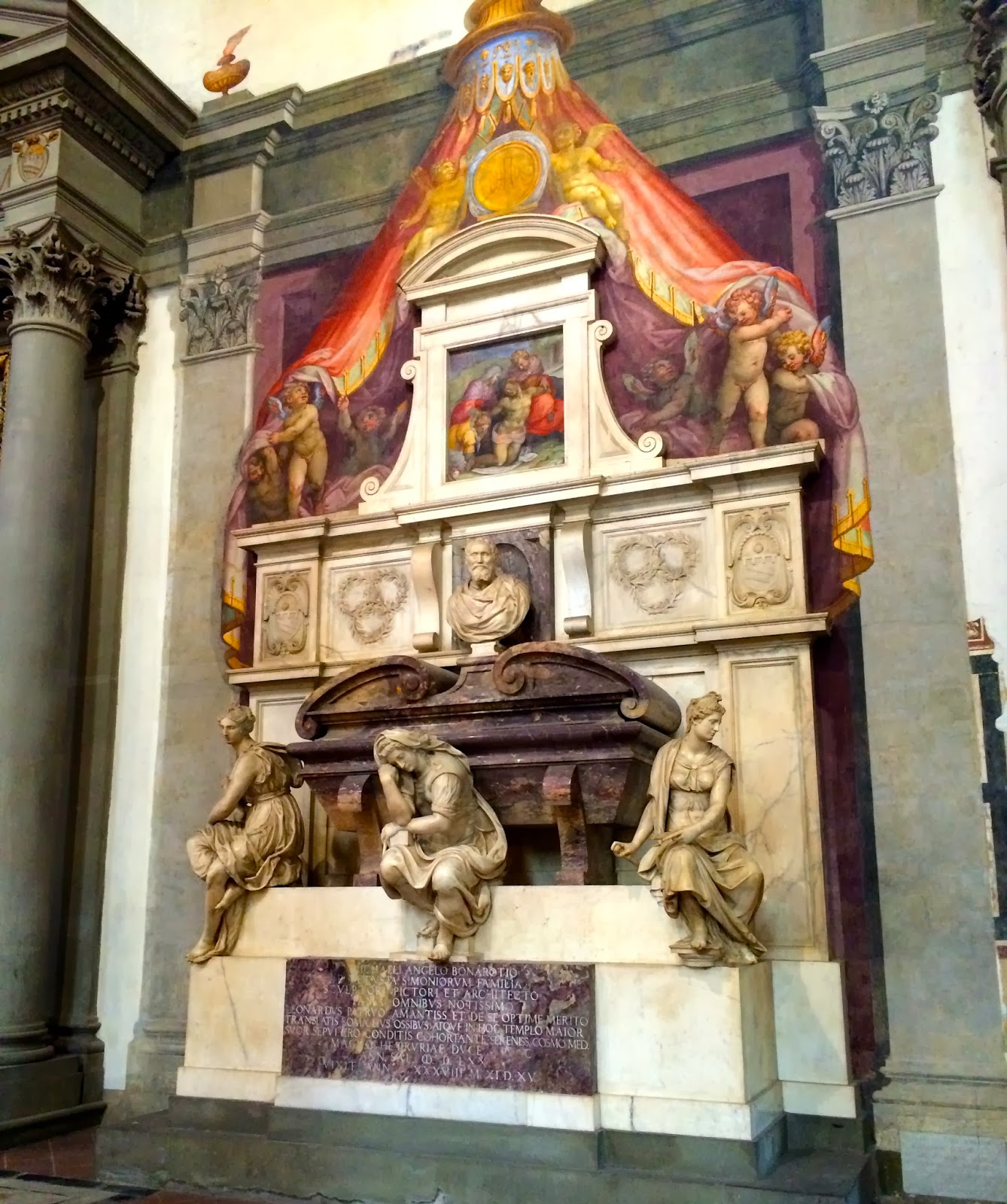One of the highlights of study abroad is that what you learn in class is complemented by the history itself, which deepens your experience and makes the city much more meaningful to you.
I didn't think I would be this fascinated about the history, but it is inseparable from understanding the art.
Did you know that pigments were made from rocks and minerals, before oil painting? They would grind them into a powder, and use egg yolk as the binding agent. How creative, when nowadays we just buy paint at a store!
We visited the Santa Croce church in town to see in person what we've talked about in class.
Giotto, the most influential painter of his time in the 1300s, changed the way people perceived art and expressed reality. Before, painters did the typical, flat oval face and the frontal view of the body, draped with endless cloth. He was the first artist to break away from this trend, painting figures at an angle and moving closer to realism with shading.
For example, here's one by Cimabue:
And now by Giotto -- notice the use of shading and the various portrayed angles of the people.
So very much improved and breaking away from the flatness trend.
Back in the day, many people involved in the banking field were concerned for their souls: the Catholic church deemed that those who made money off of interest were sinners and were destined for hell.
However, the concept introduced was that if you donated money to have the church built and the frescoes done, then you could be redeemed from this fate.
So, the two wealthiest families (who were coincidentally funding the wars of the King of England at the time) poured their finances into this. What is shown below tells the story of St. Francis and his life.
Several chapels are paid for in advance to have the family buried there.
Because they are so monstrously wealthy, only the best artists were hired to do the work: namely Giotto and his apprentices. What is interesting is that the money ran out -- the king of England never paid them back, of course -- Giotto rushed to finish them.
Now, frescoes are done on freshly laid wet plaster. That's how the color is stained and it will remain for ages. It takes a very long time (perhaps one head painted a day). However, as the title of this post indicates… the famous Giotto, who basically instigated the Renaissance, did the second chapel work on dry plaster to speed up the process!
When you do work on dry plaster, it just peels off over time. Very evident when you compare side by side. He probably was thinking, I'll have been dead for a hundred years before anyone notices what I did…
Hence, the title of this post: even the best artists cut corners.
As much as we look up to these famous and influential people who changed world history (so to speak), the pedestal is not without its imperfections.
And to conclude, I present to you:
the tomb of Michelangelo.
And the tomb of Galileo.
Rather than learning by hearing or writing, I am learning by doing, seeing, experiencing.
I'm able to have glimpses of insight of what Florence was like hundreds of years ago, and how it has changed to what it is now. Each day is a new opportunity, and I'm looking forward to seeing so much more!










No comments:
Post a Comment